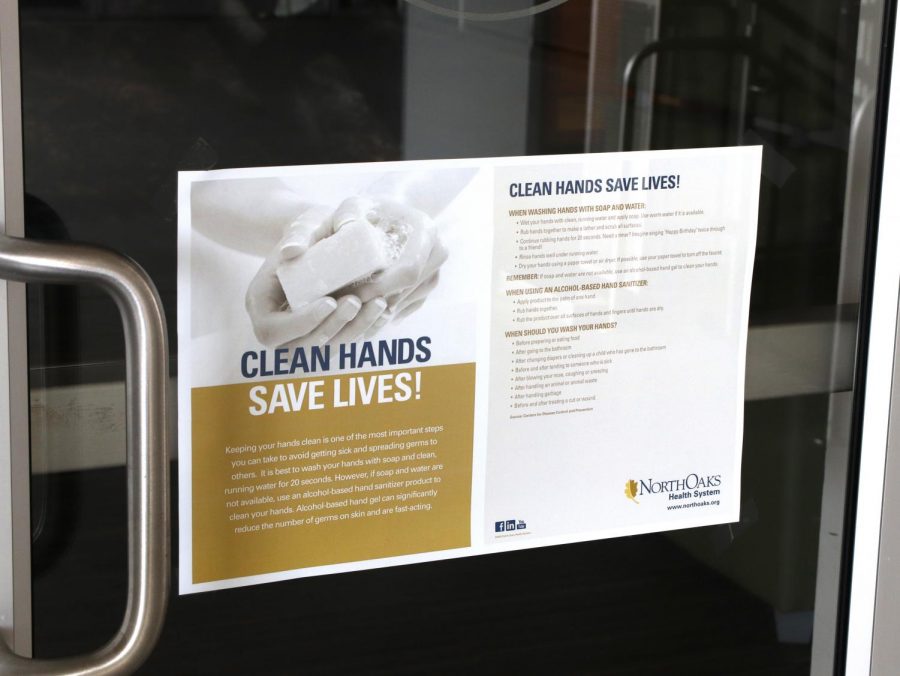An update on the pandemic: coronavirus
Maggie Tregre/The Lion’s Roar
On campus, the Office of Student Engagement has stopped providing free coffee,water, tea and hot chocolate in their office. Students are encouraged to practice good hygiene by washing their hands and using hand sanitizer often.
On Jan. 30, COVID-19 was declared a “public health emergency of international concern.” On March 13, President Donald Trump declared the outbreak a national emergency.
Symptoms of the coronavirus consist of fever, coughing, shortness of breath and in some cases, pneumonia. These symptoms can appear as soon as two days or as slow as two weeks.
The Centers for Disease Control and Prevention recommends that people avoid all nonessential travel to the following destinations: China, Iran, most European countries, the United Kingdom and Ireland. Most foreign nationals who have been in one of these countries during the previous 14 days will not be allowed to enter the United States.
As of March 16, the only known state without a case of COVID-19 is West Virginia.
There is currently no vaccine for the coronavirus. Health experts say that the most preventative measure is to avoid being around the virus.
Wash your hands, avoid contact with your eyes, nose and mouth and distance yourself from others. To keep others safe, cover coughs and sneezes, throw away tissues and wear a facemask if you are sick. Also, clean and disinfect frequently.
As of Monday morning, there are approximately 3,500 cases in the U.S. There have been more than 7,000 deaths worldwide.
Due to the vast spread of COVID-19 and its entrance into Louisiana, all public schools have been closed until April 13.
Governor John Bel Edwards postponed the presidential primary until June. On March 16, he banned gatherings of more than 50 people, in an effort to slow the spread of the coronavirus. Casinos, bars and movie theatres are closing, and restaurants are limited to delivery and drive-through orders only.
Out of the 64 parishes in Louisiana, ten have been confirmed with at least one coronavirus case. There are currently 136 cases and three deaths reported in Louisiana. Older adults and people who have serious chronic medical conditions such as heart disease, lung disease and diabetes are more likely to contract the virus.
At 5.7%, the U.S. currently has the world’s highest death rate for the new coronavirus, compared with a global average of 3.4%. New testing standards and available test kits are likely to pick up more mild cases in the U.S. and lower the death rate.
“Other countries are testing much more broadly than we are,” William Schaffner, an infectious-disease specialist at the Vanderbilt University School of Medicine, previously told Business Insider. “We are trotting along while they’re racing along.”
Speaking in the White House Rose Garden, Trump declared a national emergency that could free $50 billion to help fight the pandemic and said that he was empowering the Secretary of Health and Human Services to waive certain laws and regulations to ensure the virus can be contained and patients treated.
“To unleash the full power of the federal government, I am officially declaring a national emergency,” said Trump.
Your donation will support The Lion's Roar student journalists at Southeastern Louisiana University.
In addition, your contribution will allow us to cover our annual website hosting costs.
No gift is too small.







